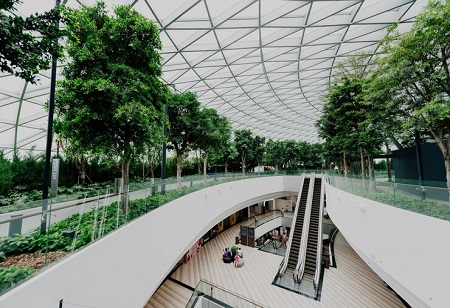
The commercial real estate sector is undergoing a seismic shift, with net-zero energy buildings taking center stage. What once seemed like a lofty goal for eco-conscious organizations is now becoming the gold standard for modern business spaces. By minimizing energy consumption and relying on renewable energy, these buildings are leading the charge toward a greener, more sustainable future.
According to the business research company, the net-zero energy buildings market is set to grow from $37.66 billion in 2024 to $44.77 billion in 2025, with a compound annual growth rate (CAGR) of 18.9%. By 2029, the market will nearly double to $88.28 billion. Much of this growth is being driven by commercial adoption, as businesses worldwide embrace energy efficiency and sustainability as part of their corporate strategy.
With increasing pressure to reduce carbon footprints and enhance energy efficiency, commercial property developers and businesses are stepping up. From office complexes to retail spaces, commercial buildings are becoming prime examples of how sustainability can align with business goals.
The commercial adoption of net-zero energy buildings is fueled by several factors:
Lowering Operating Costs: Energy-efficient designs and on-site renewable energy generation reduce utility bills significantly, appealing to cost-conscious businesses.
Meeting Sustainability Goals: Many corporations are adopting Environmental, Social, and Governance (ESG) initiatives, and net-zero buildings play a key role in achieving these goals.
Future-Proofing Investments: With stricter regulations on carbon emissions looming, net-zero buildings ensure compliance while enhancing property value.
Corporate Reputation: Green buildings symbolize innovation and responsibility, giving businesses a competitive edge in attracting clients, customers, and employees.
The boom in the commercial net-zero energy building sector isn’t just about retrofitting existing spaces. Innovative construction techniques are creating smarter, greener buildings from the ground up. Advanced materials, energy-efficient HVAC systems, and on-site renewable energy sources like solar panels and wind turbines are now integral to commercial design.
At the same time, smart building technologies are redefining energy management. IoT-enabled systems monitor energy usage in real time, ensuring peak efficiency and reducing waste. The integration of these technologies makes commercial buildings not just green but also smarter and more adaptable.
Renewable energy sources, particularly solar and wind power, are at the core of net-zero buildings. Commercial properties are increasingly installing solar panels to generate on-site electricity, offsetting their energy needs entirely. For instance, solar energy generation in the U.S. is projected to rise by 75% between 2023 and 2025, underscoring the growing reliance on renewable solutions.
This reliance on renewables goes beyond environmental benefits—it’s an economic win. Businesses can reduce energy expenses, hedge against fluctuating utility rates, and gain energy independence.
The adoption of net-zero energy buildings in the commercial sector is more than a passing trend—it’s a movement reshaping the future of real estate. These buildings represent a commitment to sustainability, efficiency, and innovation, setting the standard for modern business spaces.
As governments introduce stricter regulations on emissions and stakeholders demand sustainable practices, businesses adopting net-zero energy buildings are positioning themselves as leaders. From cutting operational costs to creating healthier, greener spaces for employees and customers, the commercial sector is showing that sustainability makes good business sense.
We use cookies to ensure you get the best experience on our website. Read more...